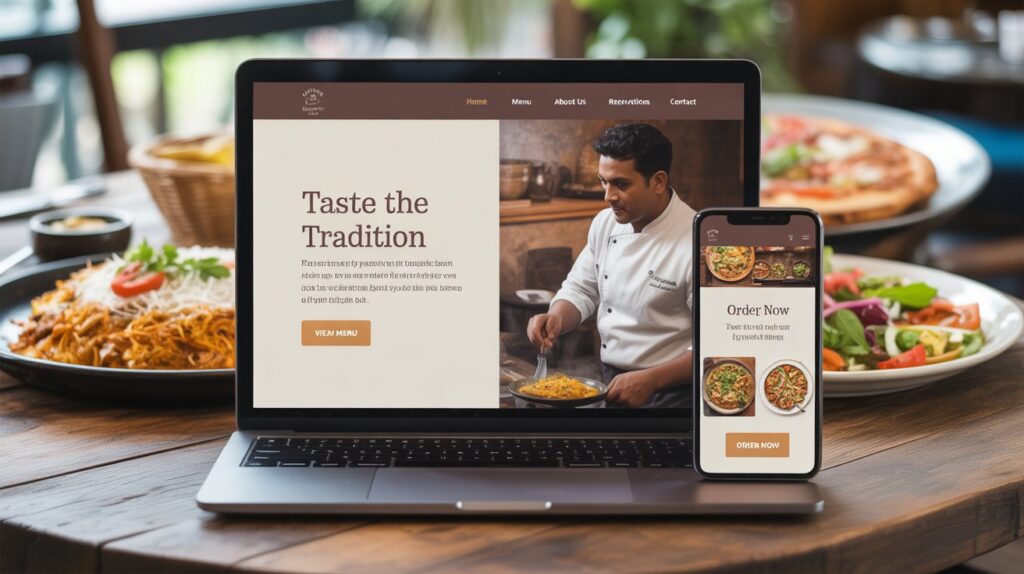In today’s digital-first world, your restaurant’s website is often the first impression customers get of your brand. Whether someone is looking for your menu, hours, or simply deciding if your place is the right vibe for dinner, a great website can make the difference between a full house and empty tables.
The good news? Creating a restaurant site isn’t as hard as it sounds. With the right approach, you can launch a beautiful, functional website that showcases your food and drives reservations. Here’s how:
1. Define Your Goals
Before diving into design or code, decide what you want your site to achieve. Common goals include:
Showcasing your menu and pricing
Highlighting your atmosphere with photos
Making reservations or online orders seamless
Sharing location, hours, and contact info
Promoting events, specials, or offers
Having clear goals ensures your design and features align with your business needs.
2. Choose a Platform
You don’t need to be a coding expert to launch a restaurant site. Some popular options include:
Website builders (Squarespace, Wix, WordPress): Great for beginners with drag-and-drop design tools.
Custom development: Perfect if you want full control and unique features. Requires web developers.
Restaurant-specific platforms (Toast, BentoBox): Designed with built-in reservation, ordering, and delivery tools.
3. Design With Diners in Mind
The design of your site should reflect your restaurant’s personality while staying user-friendly. Keep these tips in mind:
Use appetizing visuals: High-quality photos of dishes and your interior sell the experience.
Keep navigation simple: Limit menu items to essentials (Menu, About, Reservations, Contact).
Mobile-first: Most diners browse on phones—make sure your site looks great on small screens.
Readable fonts and colors: Prioritize clarity over fancy design elements.
4. Showcase Your Menu
Your menu is the star of your site. Make it easy to browse and avoid just uploading a PDF. Instead:
Create a clean, scannable page with sections (starters, mains, desserts, drinks).
Include descriptions and prices.
Highlight dietary options (vegan, gluten-free, etc.).
If possible, integrate an ordering system for pickup or delivery.
5. Make Reservations Easy
If your restaurant accepts reservations, integrate tools like OpenTable, Resy, or a booking plugin. For casual spots, a simple “Call Now” button can work too. Convenience is key—don’t make customers hunt for how to book.
6. Add Essential Information
Think like your guests: what do they want to know quickly? Always include:
Address with a map integration
Phone number and email
Opening hours
Social media links
Parking or delivery details (if relevant)
7. Optimize for SEO & Local Search
You want people searching “best pasta near me” to find you. Basic SEO steps include:
Using keywords like your cuisine + city (e.g., “Italian restaurant in Austin”).
Adding your restaurant to Google Business Profile.
Including alt text on images.
Keeping your site fast and mobile-friendly.
8. Build Trust With Reviews & Testimonials
Show off happy customers by embedding Google or Yelp reviews, or add testimonials to your homepage. Social proof goes a long way in attracting first-time diners.
9. Keep It Updated
Outdated hours, old menus, or expired promotions frustrate visitors. Make it a habit to update your website whenever you change your offerings or schedule.
10. Add a Touch of Personality
Your website shouldn’t just be functional—it should give visitors a taste of your vibe. Add:
A story about your restaurant’s history or mission.
Chef’s notes or philosophy on food.
Event highlights, seasonal specials, or blog posts.
Final Thoughts
A well-designed restaurant website isn’t just about looking pretty—it’s about creating a digital extension of your dining experience. By studying examples like Student Biryani UAE, Thalappakatti, Aminia, or Shah Ghouse, you’ll see how blending heritage, modern design, and user-friendly features can attract diners and keep them coming back.
Whether you DIY with a builder or hire a developer, take the time to craft a site that makes people hungry to visit your restaurant.

